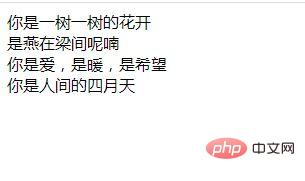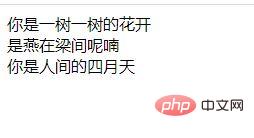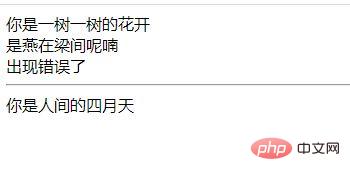 Backend Development
Backend Development
 PHP Problem
PHP Problem
 What is exception handling in PHP? How to use try-catch in exception handling?
What is exception handling in PHP? How to use try-catch in exception handling?
What is exception handling in PHP? How to use try-catch in exception handling?
The previous article introduced you to "How to use advanced syntax and try-catch in PHP". This article continues to introduce to you what is exception handling in PHP? How do we use try-catch in exception handling? It has certain reference value. Friends in need can refer to it. I hope it will be helpful to everyone.

Exception handling:
In life:
Plan A, Plan B
In the code:The code is executed according to normal logic. If an exception occurs, another prepared plan is executed.
try catch:Mapping In the code, try is to try to execute a certain block of code, and if an exception occurs, you need to manually throw an exception (throw). After the exception is thrown, it will be caught by catch.
[Note] try-catch is a structure, a try must correspond to at least one catch
[Note] No code can be added between try and catch
try-catch fixed format:
try {
} catch () {
}Let’s take the code as an example and create a new file. The code is as follows:
<?php
try {
echo '你是一树一树的花开<br />';
echo '是燕在梁间呢喃<br />';
echo '你是爱,是暖,是希望<br />';
} catch (Exception $e) {
}
echo '你是人间的四月天';The execution results are as follows:

We will find that the results are output in the normal order. If there is no exception, catch will not be executed directly. If there is an exception, then we will throw the exception manually. , throw an exception through throw. Let's take the code as an example:
<?php
try {
echo '你是一树一树的花开<br />';
echo '是燕在梁间呢喃<br />';
throw new Exception('出现错误了',10);
echo '你是爱,是暖,是希望<br />';
} catch (Exception $e) {
}
echo '你是人间的四月天';The execution result is as follows:

We will find that the code directly skips the first Three sentences;
So our execution process is: the program runs the code in the try structure normally. If an exception is thrown in the try, the code after the exception thrown in the try will not be executed again, then The code in catch will be executed and then continue to execute downwards. If no exception is thrown, after the code in try is executed, the program will continue to execute Exception
In fact, when we throw this exception, catch The exception we throw can be captured inside. If we want to capture the error message, we can use getMessage() in echo. The code is as follows:
catch (Exception $e) {
echo $e->getMessage();
}The execution result is as follows:

The official exception handling class is the base class of all exception classes
getMessage: Get the exception message
getCode: Get the exception code
Recommended learning: php video tutorial
The above is the detailed content of What is exception handling in PHP? How to use try-catch in exception handling?. For more information, please follow other related articles on the PHP Chinese website!

Hot AI Tools

Undresser.AI Undress
AI-powered app for creating realistic nude photos

AI Clothes Remover
Online AI tool for removing clothes from photos.

Undress AI Tool
Undress images for free

Clothoff.io
AI clothes remover

AI Hentai Generator
Generate AI Hentai for free.

Hot Article

Hot Tools

Notepad++7.3.1
Easy-to-use and free code editor

SublimeText3 Chinese version
Chinese version, very easy to use

Zend Studio 13.0.1
Powerful PHP integrated development environment

Dreamweaver CS6
Visual web development tools

SublimeText3 Mac version
God-level code editing software (SublimeText3)

Hot Topics
 1378
1378
 52
52
 PHP 8.4 Installation and Upgrade guide for Ubuntu and Debian
Dec 24, 2024 pm 04:42 PM
PHP 8.4 Installation and Upgrade guide for Ubuntu and Debian
Dec 24, 2024 pm 04:42 PM
PHP 8.4 brings several new features, security improvements, and performance improvements with healthy amounts of feature deprecations and removals. This guide explains how to install PHP 8.4 or upgrade to PHP 8.4 on Ubuntu, Debian, or their derivati
 How To Set Up Visual Studio Code (VS Code) for PHP Development
Dec 20, 2024 am 11:31 AM
How To Set Up Visual Studio Code (VS Code) for PHP Development
Dec 20, 2024 am 11:31 AM
Visual Studio Code, also known as VS Code, is a free source code editor — or integrated development environment (IDE) — available for all major operating systems. With a large collection of extensions for many programming languages, VS Code can be c
 How do you parse and process HTML/XML in PHP?
Feb 07, 2025 am 11:57 AM
How do you parse and process HTML/XML in PHP?
Feb 07, 2025 am 11:57 AM
This tutorial demonstrates how to efficiently process XML documents using PHP. XML (eXtensible Markup Language) is a versatile text-based markup language designed for both human readability and machine parsing. It's commonly used for data storage an
 Explain JSON Web Tokens (JWT) and their use case in PHP APIs.
Apr 05, 2025 am 12:04 AM
Explain JSON Web Tokens (JWT) and their use case in PHP APIs.
Apr 05, 2025 am 12:04 AM
JWT is an open standard based on JSON, used to securely transmit information between parties, mainly for identity authentication and information exchange. 1. JWT consists of three parts: Header, Payload and Signature. 2. The working principle of JWT includes three steps: generating JWT, verifying JWT and parsing Payload. 3. When using JWT for authentication in PHP, JWT can be generated and verified, and user role and permission information can be included in advanced usage. 4. Common errors include signature verification failure, token expiration, and payload oversized. Debugging skills include using debugging tools and logging. 5. Performance optimization and best practices include using appropriate signature algorithms, setting validity periods reasonably,
 PHP Program to Count Vowels in a String
Feb 07, 2025 pm 12:12 PM
PHP Program to Count Vowels in a String
Feb 07, 2025 pm 12:12 PM
A string is a sequence of characters, including letters, numbers, and symbols. This tutorial will learn how to calculate the number of vowels in a given string in PHP using different methods. The vowels in English are a, e, i, o, u, and they can be uppercase or lowercase. What is a vowel? Vowels are alphabetic characters that represent a specific pronunciation. There are five vowels in English, including uppercase and lowercase: a, e, i, o, u Example 1 Input: String = "Tutorialspoint" Output: 6 explain The vowels in the string "Tutorialspoint" are u, o, i, a, o, i. There are 6 yuan in total
 7 PHP Functions I Regret I Didn't Know Before
Nov 13, 2024 am 09:42 AM
7 PHP Functions I Regret I Didn't Know Before
Nov 13, 2024 am 09:42 AM
If you are an experienced PHP developer, you might have the feeling that you’ve been there and done that already.You have developed a significant number of applications, debugged millions of lines of code, and tweaked a bunch of scripts to achieve op
 Explain late static binding in PHP (static::).
Apr 03, 2025 am 12:04 AM
Explain late static binding in PHP (static::).
Apr 03, 2025 am 12:04 AM
Static binding (static::) implements late static binding (LSB) in PHP, allowing calling classes to be referenced in static contexts rather than defining classes. 1) The parsing process is performed at runtime, 2) Look up the call class in the inheritance relationship, 3) It may bring performance overhead.
 How do you handle exceptions effectively in PHP (try, catch, finally, throw)?
Apr 05, 2025 am 12:03 AM
How do you handle exceptions effectively in PHP (try, catch, finally, throw)?
Apr 05, 2025 am 12:03 AM
In PHP, exception handling is achieved through the try, catch, finally, and throw keywords. 1) The try block surrounds the code that may throw exceptions; 2) The catch block handles exceptions; 3) Finally block ensures that the code is always executed; 4) throw is used to manually throw exceptions. These mechanisms help improve the robustness and maintainability of your code.



